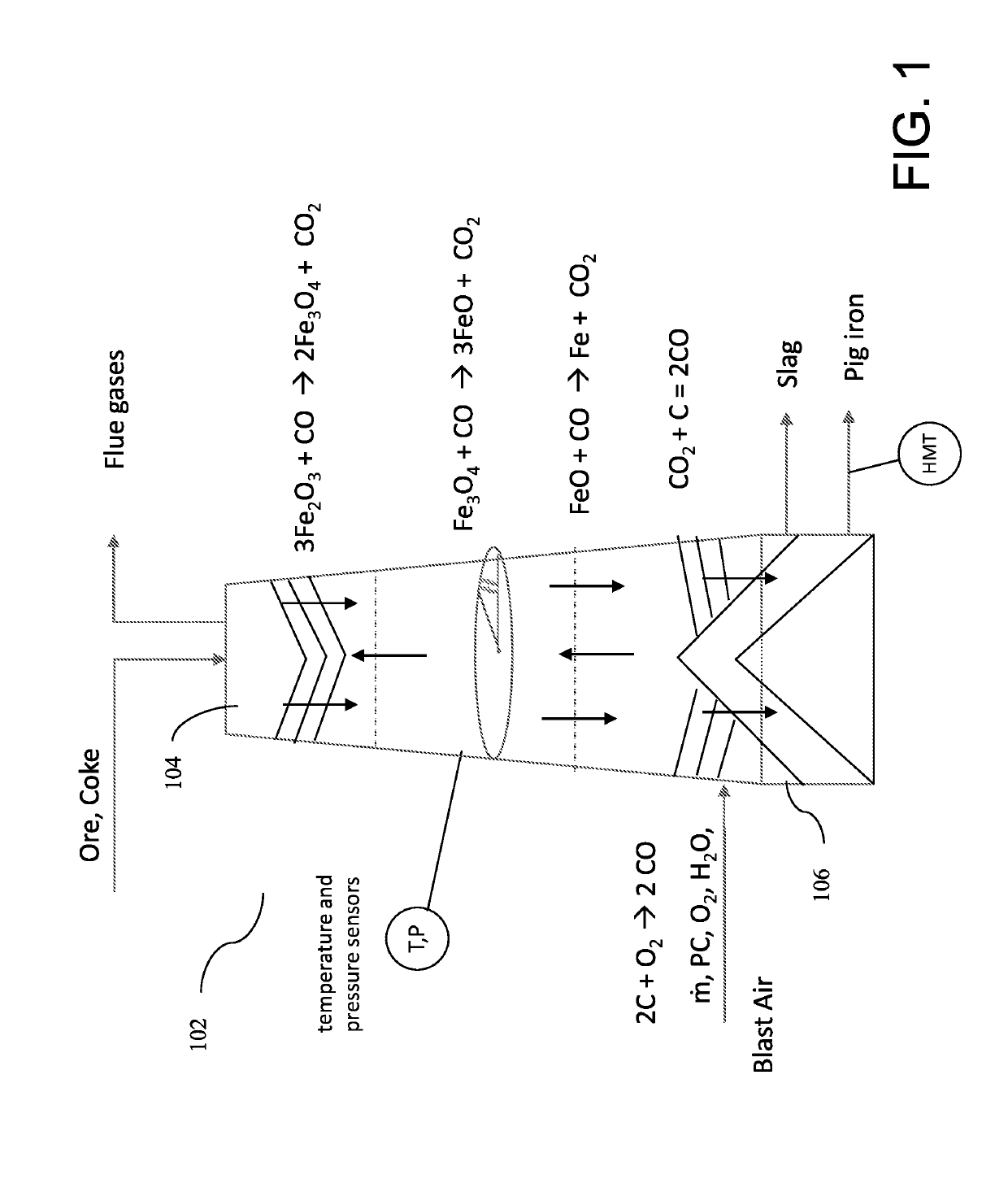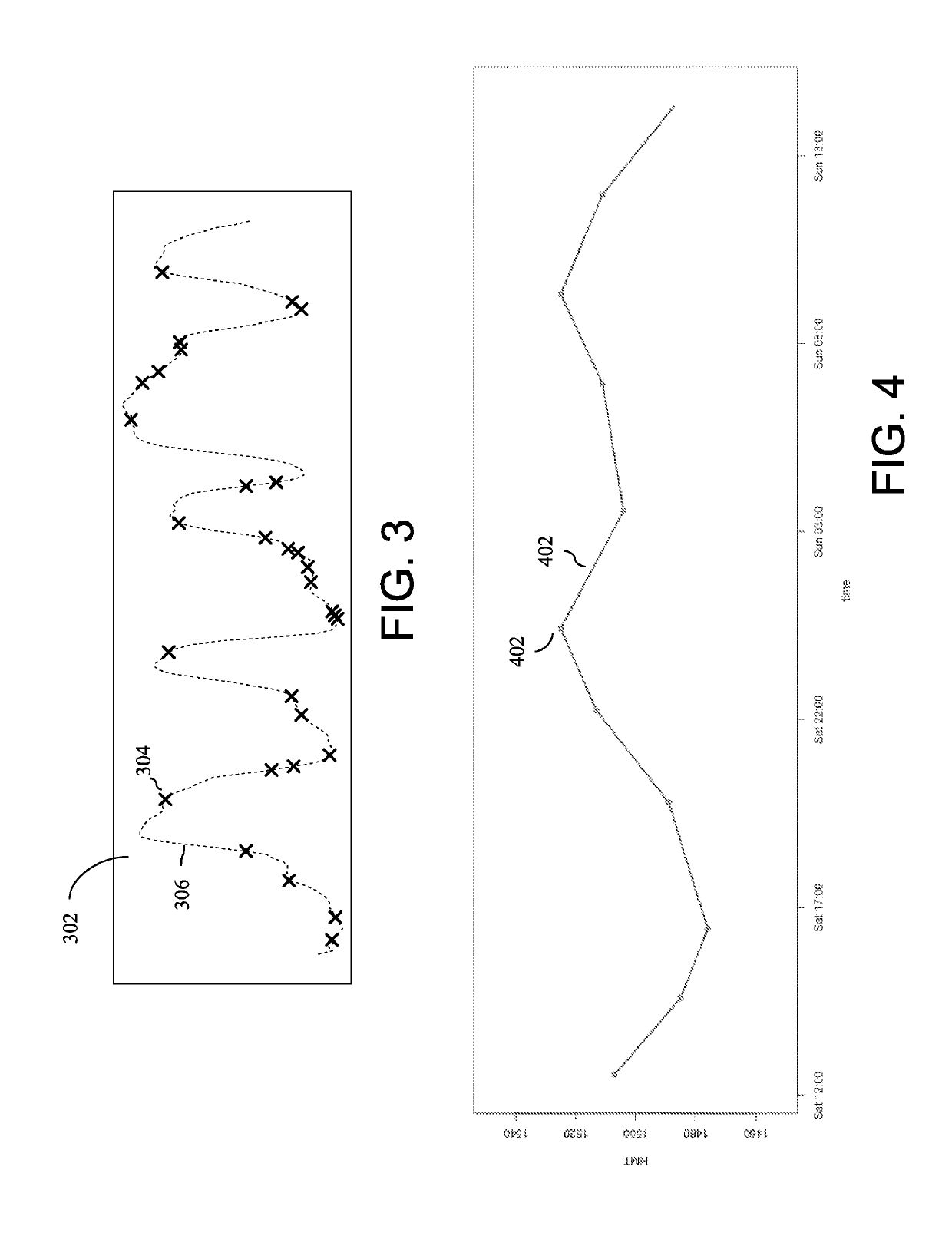Manufacturing process control with deep learning-based predictive model for hot metal temperature of blast furnace
a technology of predictive model and manufacturing process, applied in the direction of furnaces, instruments, heat measurement, etc., can solve the problem of difficulty in accurately predicting future data
- Summary
- Abstract
- Description
- Claims
- Application Information
AI Technical Summary
Benefits of technology
Problems solved by technology
Method used
Image
Examples
Embodiment Construction
[0021]A control system, apparatus, method and techniques are disclosed that develop a deep learning (DL)-based predictive model for a manufacturing process, where available measurement data for state variables are sparse, to be able to control the manufacturing process. A predictive model in one embodiment predicts one or more state variables using machine learning (ML) or deep learning (DL). The DL-based predictive model in one embodiment is a data-driven model that is trained based on sparse observations (measurements) of one or more state variables.
[0022]In blast furnace operation, measurement data for state variables such as the hot metal temperature data are available only sparsely. A DL-based predictive model in one embodiment predicts the hot metal temperature (HMT) of blast furnace operation with sparsely measured hot metal temperature data.
[0023]For example, one or more of ML and DL techniques are employed to develop a predictive model that can predict status of a manufactu...
PUM
| Property | Measurement | Unit |
|---|---|---|
| temperature | aaaaa | aaaaa |
| temperature | aaaaa | aaaaa |
| temperature | aaaaa | aaaaa |
Abstract
Description
Claims
Application Information
 Login to View More
Login to View More - R&D
- Intellectual Property
- Life Sciences
- Materials
- Tech Scout
- Unparalleled Data Quality
- Higher Quality Content
- 60% Fewer Hallucinations
Browse by: Latest US Patents, China's latest patents, Technical Efficacy Thesaurus, Application Domain, Technology Topic, Popular Technical Reports.
© 2025 PatSnap. All rights reserved.Legal|Privacy policy|Modern Slavery Act Transparency Statement|Sitemap|About US| Contact US: help@patsnap.com



